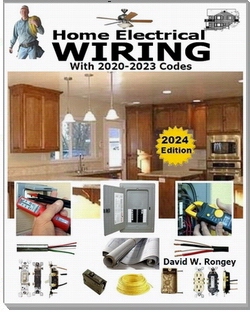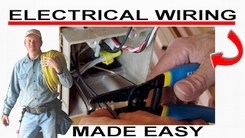Electrical Codes for Underground Wiring

|
By Dave Rongey
Summary: Listing of electrical codes for underground with examples of electrical underground codes for home electrical wiring. © By: Dave Rongey |
Electrical Code Definitions for Underground Home Electrical Wiring
UNDERSTANDING THE IMPORTANCE OF PROPER UNDERGROUND WIRING
NEC 300-3
All conductors of the same circuit, including grounded conductors, shall be contained in the same raceway, cable, or trench.
Code Adoption Information:
The codes shown are examples only and may not be current or accurate for your application or jurisdiction. Contact your local building authority for complete information.NATIONAL ELECTRICAL CODE
NEC 300-5 Generally, cables approved for direct burial shall have a minimum cover of 24 inches. When wiring is installed at dwellings in approved non-metallic raceways, the minimum cover can be reduced to 18 inches.
NEC 300-5 GFCI When a GFCI protected residential branch circuit is rated 20 amps or less and 120 volts or less, the minimum cover can be reduced to 12 inches.
NEC 300-5 Conductors emerging from underground shall be installed in rigid metal conduit, intermediate metal conduit, or Schedule 80 rigid nonmetallic conduit to provide protection from physical damage. This protection shall extend from 18 inches below grade or the minimum cover distance, above, to the point of termination above ground.
Residential Electrical Code Examples for Underground
NEC 300.5 Underground Wiring
Conduit Identification Underground service laterals shall have their location identified by a warning ribbon placed in the trench at least 12 inches above the underground installation.
NEC 300.5 Underground Wiring conduit movement protection Where subject to movement, direct buried cables or raceways shall be arranged to prevent damage to the enclosed conductors or connected equipment;
NEC 300.5 Underground Wiring Conduits emerging from the ground Conductors emerging from underground shall be installed in rigid metal conduit, intermediate metal conduit, or Schedule 80 rigid nonmetallic conduit from 18 inches below grade or the minimum cover distance to the point of termination above ground.
Always contact your local building authority for complete and up to date code information.















